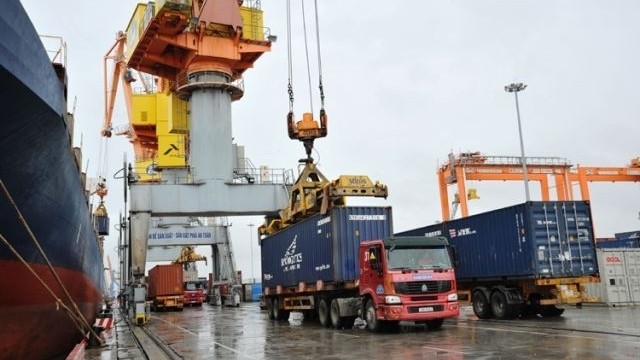Many targets fulfilled
According to Tran Quoc Phuong, Director of the Department of National Economic Issues under the Ministry of Planning and Investment (MPI), with the socio-economic development figures in the first nine months of the year, it is projected that all of the 12 criteria set by the National Assembly will be fulfilled, with eight expected to exceed the targets, thereby helping to realise the five-year socio-economic targets. The GDP growth for 2018 could reach 6.7%, or even higher, if more efforts are made in the final months of the year.
Data from the General Statistics Office (GSO) show that the Vietnamese economy grew by 6.98% in the January-September period, the highest growth rate in the past eight years. The manufacturing sector continued to be a bright spot and the main driver of growth, expanding by 12.65% during the period. The services sector grew by 6.98%, which was lower than the previous year but higher than the average during the 2012-2016 period. Exports in the first nine months of the year reached nearly US$179 billion, up 15.4%, with 26 goods bringing in over US$1 billion each.
The notable feature of the economy in the last nine months is that high growth was maintained and the quality of growth was improved. Deputy Head of the GSO’s National Accounts System Department, Duong Manh Hung, stated that the improved quality of growth was reflected through a higher contribution of total factor productivity (TFP).
With the GDP growth rate projected at 6.7% for this year, the contribution of TFP is 40.23%, capital 50% and labour 9.77%. For the 2016-2018 period, the contribution of TFP is 42.18%, which is 10 percentage points higher than the 2011-2015 period and the target of 30-35% for the five-year period. This shows that the contribution of science, technology and management has improved markedly.
Growing worry from trade war
Commenting on the challenges facing the economy in the remaining months of 2018 and the whole of 2019, GSO Director Nguyen Bich Lam emphasised that, as a rapidly opening economy, Vietnam is highly susceptible to global economic uncertainties.
The openness of the Vietnamese economy was 199.7% in 2016, rose to 215.9% in 2017 and currently stands at 229.5%. As the US-China trade war is escalating,Vietnam will face great pressure in managing its domestic monetary policy, exchange rates, interest rates and inflation.
For export activities, it is not ruled out that in the long run Vietnam could face tax and technical barriers if the US trade policy is widened to many kinds of imports.
Another apparent risk is that goods from other countries “borrow” the Vietnamese origin for export to the US. The shift of the investment flow out of China could also lead to a wave of low-tech and small-sized projects flooding into Vietnam. This threat should be identified and it is time to select foreign investment projects carefully in order to minimise the negative impacts on the domestic economy.
The government needs to renovate the methods used to attract FDI by focusing on world-leading investors and countries that hold original technologies and have a modern management capacity, stated GSO Director Nguyen Bich Lam.
In the latest update on the Vietnamese economy, the Asian Development Bank revised the growth forecast for Vietnam in 2018 to 6.9%, from an earlier estimate of 7.1%. The ADB advised that Vietnam needs to remove economic bottlenecks, continue to step up administrative reform, improve the business environment and infrastructure and diversify its markets.
At a recent meeting between the MPI and local authorities, the leaders of a number of provinces expressed their concerns over slow public investment capital assignment and disbursement, which will affect local economic growth. The GSO stated that if the disbursement rate of public investment could reach 95%-98% of the target for this year, it could support growth, which can be achieved if ministries and localities focus on large and key projects and urge contractors to accelerate the projects that are significant to enhancing the productive capacity for the economy.
Although inflation is likely to be contained at below 4%, the aggregate consumer price index in the first nine months of the year has already reached 3.2%. Experts warned that in the usual pattern, prices will go up in the final months of the year, therefore, it is necessary to construct response scenarios in order to stabilise the market, especially the prices of petrol and public services.
















